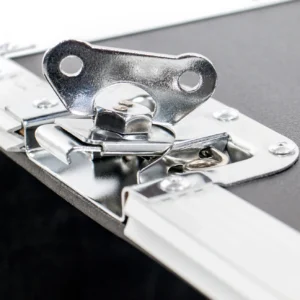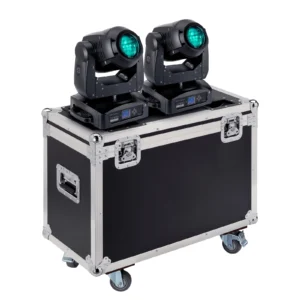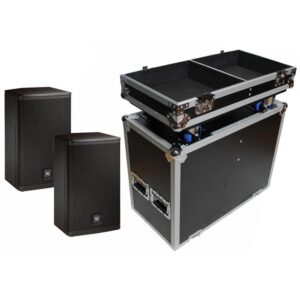Escolhendo as dimensões corretas da caixa de voo: um guia de tamanho e capacidade
Ao investir em uma capa protetora para equipamentos valiosos, escolha a opção certa mala de voo dimensões é uma das etapas mais importantes.
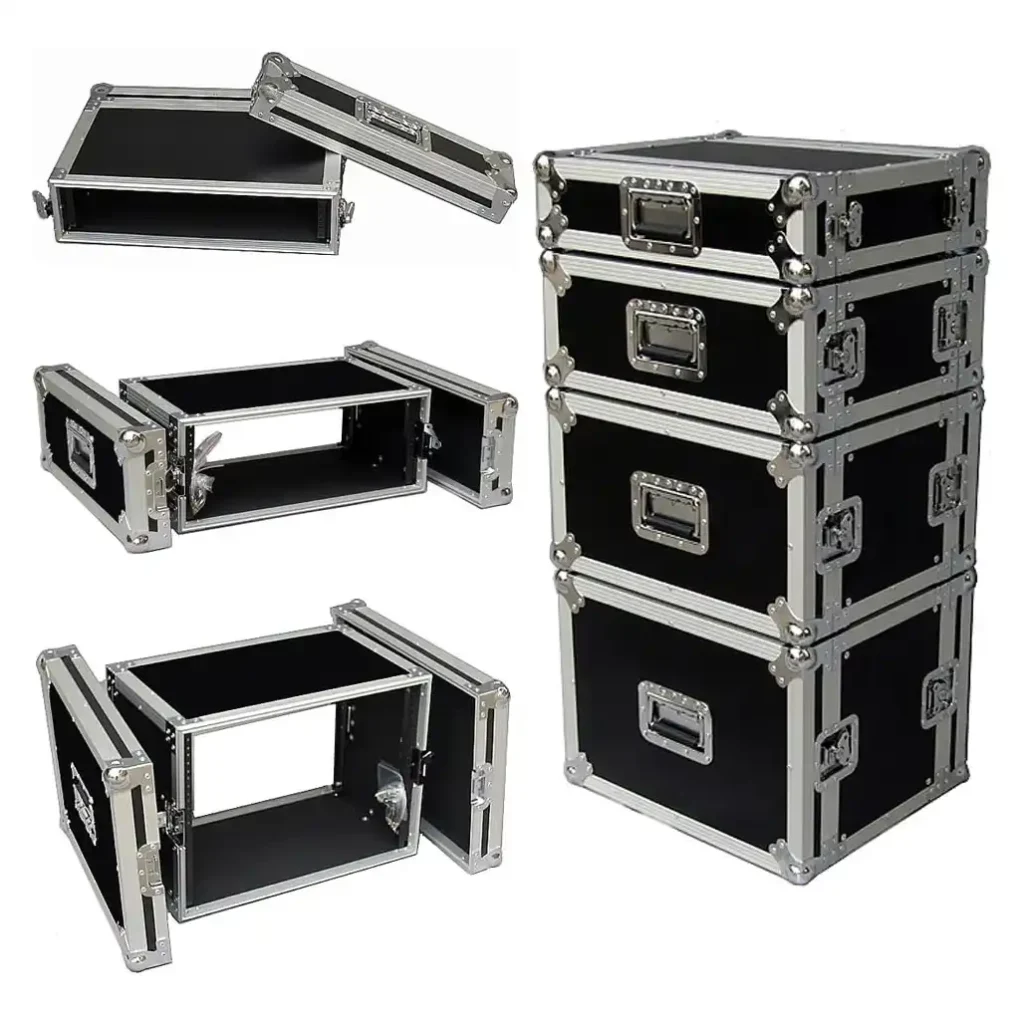
Uma maleta de voo muito pequena não fornecerá espaço ou acolchoamento adequado, enquanto uma muito grande pode adicionar volume e peso desnecessários.
Em ambos os casos, o equipamento corre risco durante o transporte.
De músicos em turnê carregando instrumentos delicados a técnicos de audiovisual carregando telas de LED volumosas, o tamanho da caixa de voo que você seleciona impacta diretamente na conveniência, segurança e desempenho a longo prazo.
Entender os tamanhos padrões das caixas de voo, bem como quando optar por uma caixa de voo grande ou pequena, garante que seu investimento valha a pena em termos de proteção e usabilidade.
Este guia explica as principais considerações — desde a medição do seu equipamento até a avaliação da capacidade interna e externa — para que você possa selecionar com confiança o tamanho certo do case.
Medindo seu equipamento: comprimento, largura, altura e formas irregulares
O primeiro passo para selecionar as dimensões corretas do flight case é medir seu equipamento cuidadosamente.
Os fabricantes normalmente solicitam três medidas básicas:
- Comprimento – a borda mais longa do seu dispositivo.
- Largura – a distância de um lado para o outro.
- Altura (ou Profundidade) – a espessura vertical.
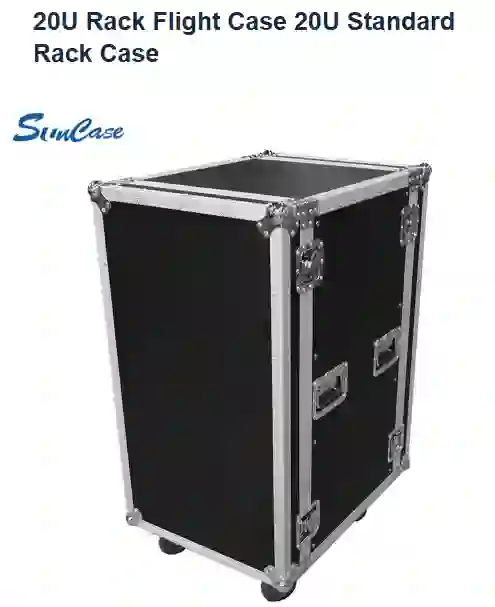
Para dispositivos simples, como impressoras ou amplificadores, esses três valores são suficientes.
Mas para equipamentos de formato irregular, como alto-falantes com laterais inclinadas ou equipamentos audiovisuais com alças salientes, é crucial observar quaisquer extensões adicionais.
Medir apenas o tamanho da base pode fazer com que o estojo não feche corretamente ou exija força para encaixar.
Em caso de dúvida, meça sempre nos pontos mais largos e altos.
Uma caixa um pouco maior internamente permite acolchoamento de espuma, que adiciona resistência ao choque.
Essa abordagem cuidadosa garante que, independentemente de você estar considerando uma pequena maleta de voo para acessórios ou uma maleta de voo grande para equipamentos pesados, você obterá o ajuste certo.
Dimensões internas e externas da caixa de voo
Outro detalhe que pode passar despercebido é a diferença entre o tamanho interno e externo.
- Dimensões internas: Refere-se ao espaço útil dentro do gabinete onde seu equipamento ficará. É a medida mais importante ao considerar proteção e ajuste.
- Dimensões externas:Isso inclui a área total do gabinete, considerando a espessura da parede, ferragens e alças.
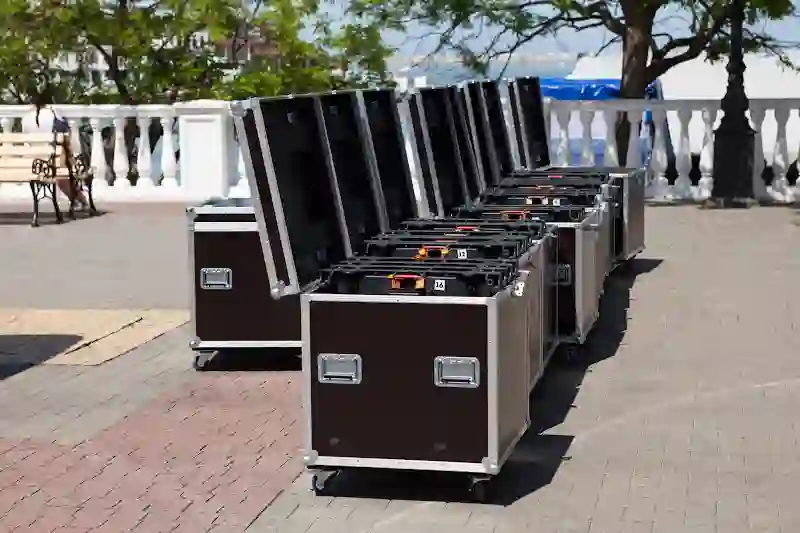
O tamanho de uma maleta de voo pode parecer ideal no papel, mas se você considerar apenas as dimensões externas, seu equipamento pode não caber.
Por outro lado, um case que acomoda seu equipamento internamente pode ser grande demais externamente para ser transportado em veículos menores.
Por exemplo, um grande estojo de voo para equipamento de iluminação pode precisar caber nas dimensões da porta de carga de uma van.
Enquanto isso, um pequeno estojo de transporte para microfones deve ser dimensionado para caber em áreas de armazenamento apertadas nos bastidores. Equilibrar a usabilidade interna com a portabilidade externa é fundamental.
Tamanhos padrão de Flight Case: o que está disponível
No mercado, existem tamanhos padrões comuns de caixas de voo que atendem a equipamentos amplamente utilizados.
Essas opções são econômicas e facilmente disponíveis, o que as torna uma ótima escolha quando seu equipamento atende às especificações típicas.

Caixa de voo com cabo
As dimensões comuns de flight case incluem 1200×600×600 mm ou 800×450×450 mm. Elas são projetadas para armazenar e transportar cabos de energia ou áudio volumosos com segurança.
U Case (Caixa para montagem em rack)
Disponível em tamanhos padrão como 8U, 10U, 12U, 14U, 16U e 18U. São essenciais para a montagem de amplificadores, processadores e outros dispositivos de rack.
Estojo de transporte para alto-falante
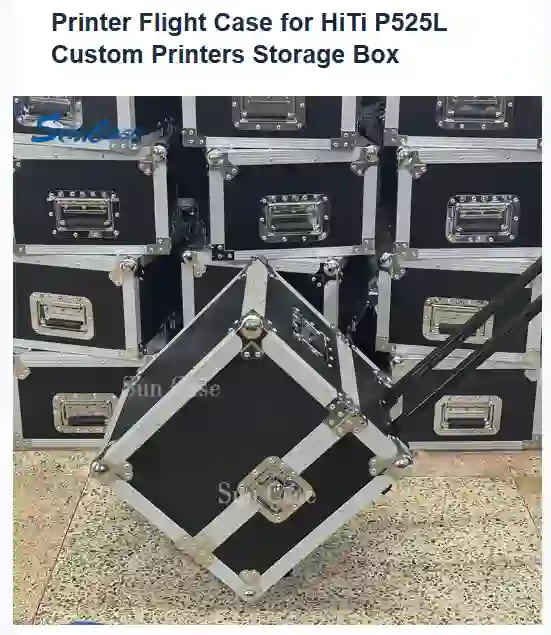
Geralmente personalizado de acordo com a marca e o modelo, mas certas dimensões genéricas estão disponíveis para designs populares de alto-falantes.
Maleta de voo para impressora
Assim como os alto-falantes, as impressoras exigem dimensões específicas para cada modelo. No entanto, muitos gabinetes prontos para uso são compatíveis com impressoras comuns de escritório ou industriais.
Se o seu equipamento estiver alinhado com estes tamanhos padrão de caixas de voo, geralmente é uma vitória rápida. Mas quando o equipamento foge do padrão, a personalização se torna essencial.
Tamanhos personalizados: quando o pronto para uso não é suficiente
Nem todos os equipamentos cabem nos tamanhos padrão de caixas de voo.
Câmeras com lentes grandes, configurações AV irregulares ou instrumentos frágeis geralmente precisam de algo personalizado.
Nestes casos, um tamanho de caixa de voo personalizado é a melhor opção.
Aqui estão cenários em que a personalização faz sentido:
- Estojo de voo para TV: Requer a marca e o número do modelo para garantir suporte interno preciso para a tela.
- Estojo de transporte para alto-falante:Como os designs dos alto-falantes variam drasticamente, o gabinete deve ser projetado para cada marca e modelo específico.
- Maleta de voo para impressora: Impressoras diferentes têm dimensões únicas; dimensões exatas são necessárias para um encaixe seguro.
- Estojos para cabos e acessórios:Embora existam tamanhos padrão, alguns clientes preferem projetar compartimentos e gavetas para melhor organização.
O dimensionamento personalizado permite layouts internos, como inserções de espuma, divisórias ou rodas que se alinham perfeitamente com o fluxo de trabalho do usuário final.
Não importa se você precisa de uma pequena maleta de voo para eletrônicos frágeis ou de uma grande maleta de voo para ferramentas industriais, personalizar o interior para atender exatamente às suas necessidades garante proteção superior.
Sobre a Suncase: Fabricante de Flight Case personalizado
Na Suncase, somos especialistas em transformar suas medidas e requisitos em caixas de proteção construídas com precisão.
Embora muitos fornecedores ofereçam apenas tamanhos padrão de caixas de voo, nós enfatizamos a flexibilidade.
Nosso processo é simples:
- Confirmação direta do tamanho do equipamento – Para itens como caixas de cabos, pedimos as dimensões solicitadas.
- Verificação de marca e modelo – Para TVs, alto-falantes e impressoras, confirmamos o equipamento exato para garantir um ajuste perfeito.
- U Cases por tamanho de rack – Oferecemos uma gama completa de 8U a 18U.
- Desenhos personalizados – Se você fornecer plantas ou esboços, podemos trazê-los à vida como um funcional tamanho de caixa de voo personalizado.
Essa abordagem prática significa que não apenas vendemos casos, mas também fornecemos soluções.
Ao combinar recomendações profissionais com especificações do cliente, a Suncase garante que cada produto equilibre proteção interna com conveniência externa.
Não importa se você precisa de uma maleta de voo grande para equipamentos industriais ou de uma maleta de voo pequena para acessórios, nossa equipe ajuda você a navegar pelas nuances das dimensões da maleta de voo.
O resultado: um produto que se ajusta perfeitamente, protege eficazmente e simplifica o transporte.

Conclusão: Obtenha as dimensões corretas na primeira vez
Escolher o tamanho certo da caixa de voo não significa apenas escolher algo que pareça forte, mas também garantir que as dimensões internas e externas atendam às suas necessidades específicas.
Embora os tamanhos padrão das caixas de voo ofereçam soluções rápidas e acessíveis, o dimensionamento personalizado garante compatibilidade perfeita para equipamentos exclusivos ou irregulares.
Ao prestar atenção às medidas, considerar a diferença entre o espaço interno e externo e saber quando optar por uma mala de voo pequena ou grande, você protegerá seu equipamento e melhorará a mobilidade.
E com a Suncase como sua parceira, você não precisa adivinhar.
Nossa equipe trabalha com você para confirmar cada detalhe, entregando cases de voo que são tão práticas quanto protetoras. Contate-nos hoje para começar.

